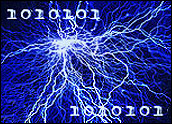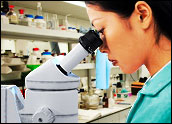
Researchers at Tufts University announced Sunday they’ve created an electrical motor many thousands of times smaller than the width of a single human hair, a breakthrough they claim could eventually lead to innovations in healthcare and technology.
The microscopic motor is the size of a single molecule and is electrically charged, an innovative feat since previous single-molecule-sized motors were powered by chemicals or light.
The distinction is important. With a light or chemically charged motor, scientists struggle with precision in adding chemicals to a clump of trillions of molecules. In that scenario, the practicality of charging the motors decreases.
With the Tufts research, though, a team led by Associate Professor in Chemistry Charles Sykes found that electricity could be used with precision and accuracy to control a single molecule, even when additional molecules sat just a nanometer away.
The team says the ability to control a single-molecule motor could lead to innovations in more precise medical and engineering technology and could lead to tinier, advanced digital devices.
“An interesting thing would be to get this into opto electronics, where you are interfacing light with electronics. With the tiny chargers on the motors, you have a tiny rotating motor and you could create something that would give off light, or a tiny microwave generator or tiny antenna,” Sykes told TechNewsWorld.
Big Technological Steps
The research, published in a recent edition of Nature Nanotechnology, was made possible in thanks to huge advances in research technology such as the scanning tunneling microscope, which uses electrons instead of light.
The scientists sent an electrical current through a butyl methyl sulfide molecule using the tip of the microscope as the molecule rested on a copper surface. In that position, a single atom worked as a pivot.
From there, the scientists could measure the molecule as it spun to prove the movements were directed by the electrical charge.
Long Way to Go
While the implications could be far-reaching in the technological field, Sykes and other chemistry experts say applications are still a long way off.
“It’s definitely fundamental work right now,” said Skyes.
One reason for that is the extreme temperature needed to measure the molecules as they spin. Since higher temperatures increase the rate at which the motors charge, the scientists had to keep the molecules in a chilly environment.
Even at 100 Kelvin, or about negative 279 degrees Fahrenheit, the molecules spin at an astonishing million spins per second. To have the capacity to measure what was going on, the research team had to keep temperatures closer to 5 degrees Kelvin, or about negative 450 degrees Fahrenheit
To apply the information found in the study to practical applications in medical or engineering fields, scientists must figure out how to operate at easier-to-attain temperatures, an issue Sykes believes is conquerable.
“I think we just have to be more clever with the chemistry of the motors to have different molecules and stronger bonds,” said Sykes.
However, different problems may exist with the practicality of this newly revealed research.
“Low temperature is not the only serious problem for applications of the phenomenon,” Alex Vologodskii, research scholar of chemistry at New York University, told TechNewsWorld.
If advances in technology do come through, Sykes envisions the motors being used in medical devices, perhaps to pump fluid through the pipes to better pinpoint a spot where medicine is headed or to sense the local environment for a clearer diagnosis. Those applications, though, are far from fruition.
“There is no reason to talk about practical applications at the moment,” said Vologodskii.





















































